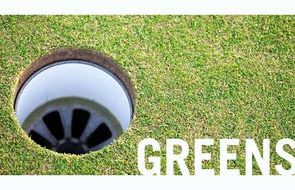- Homepage
- News and Features
- Greens secrets revealed: speed, care, climate impact
Greens secrets revealed: speed, care, climate impact
Given decent surfaces to putt on, golfers are invariably happy. So, we asked the experts to share their advice on how to create and maintain them.
It should only take a moment of consideration to begin to grasp how much work and expertise goes into the preparation and maintenance of an 18-hole golf course that, on average, will measure in excess of 100 acres.
Yet, above all else, golfers judge a course by the quality of its greens.
Specifically, how smooth they are, how pristine they look and, yes, how fast the ball rolls across the surface. As consumers, we are remarkably demanding about the quality of the greens we putt on and that does not necessarily change in the winter months.
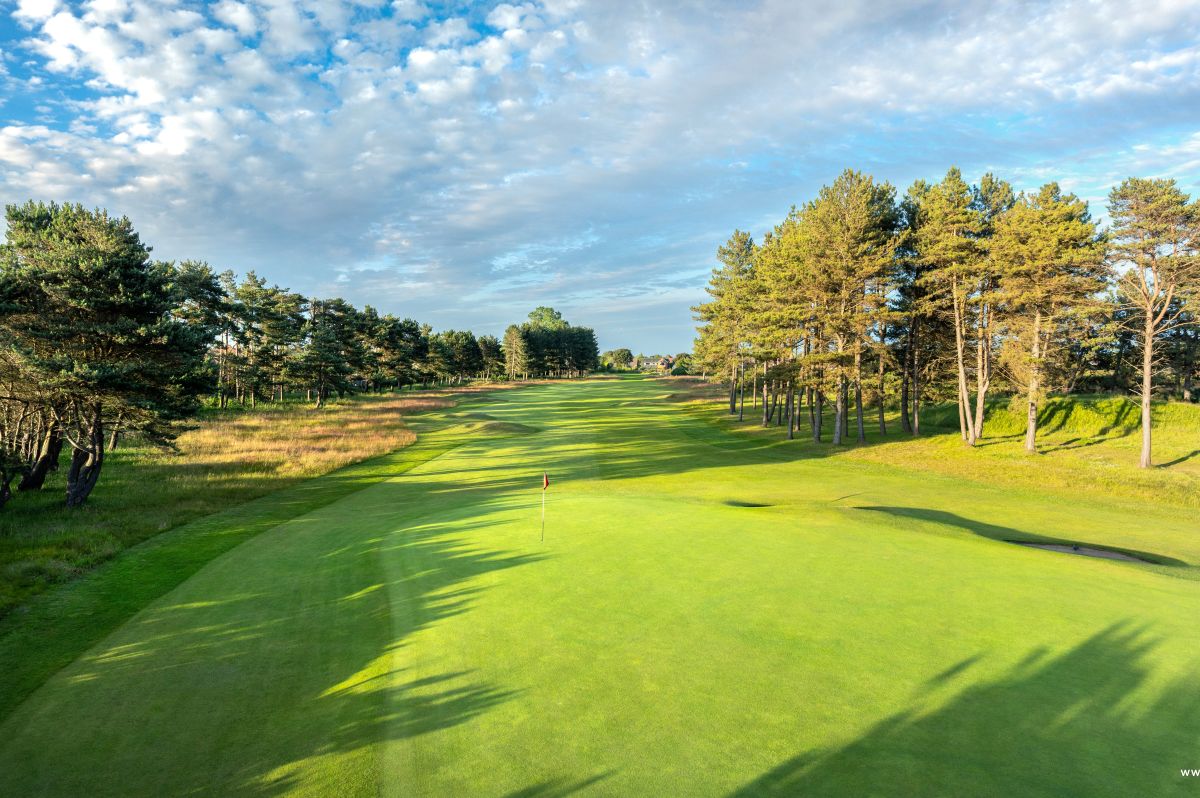
In years gone by, many of us would put our clubs away for the winter and only emerge as the Masters was getting underway. Now, golf club members expect to play 12 months a year.
That has a huge impact on the greens.
Putting surfaces get little chance to rest or for periods of maintenance to take place. At the most unpromising time of the year for recovery and growth, they are subjected to more pitchmarks and footprints than ever before. And how many golfers take very kindly to temporary greens when we have managed to get out on the course for the first and only time in a couple of weeks?
In this section of Your Course, we have gathered opinion and insight from expert greenkeepers who work at a variety of courses up and down the land. We have asked them the questions that often come up at your club and hope their answers will help you to work with your own greenkeepers to produce the best possible greens, both this summer and in the years ahead.
Meet the panel

Andy Laing
Course Manager, Gaudet Luce

Caroline Munro
Head Greenkeeper, Bonar Bridge and Ardgay Golf Club

Rob Sandilands
Course Manager, Formby Ladies
Every club golfer wants the greens to be as good as they can be and, sometimes, we’re not shy in expressing our views if we perceive them to be different. But how many of us have stopped to think about how those putting surfaces were produced? Read on to find out more.
What do you do daily to prepare your greens?
Andrew: It varies with the time of year. During the summer, we would be cutting pretty much every day throughout the growing season. From April certainly until the end of October, I’d expect to be mowing every day – potentially alternating with rolling if we were in a period of lower growth. During the winter months, we’d remove the dew every day using a variety of tools – whether that be a brush or cane, whip and pole, and that helps to reduce the risk of disease by keeping the surfaces drier.
At the back end of every year, every season, we have a comprehensive soil test done. That gives a range of criteria to look at – water infiltration rates, organic matter content and available nutrients. From that, we can devise a plan for the autumn as to what type of aeration and renovation work we need to do and how severe that will need to be. I always base the work we schedule on the results of the soil test.
Rob: Wintertime prep would be removing the dew, removing any wormcasts and any debris like that – we’ve got quite a few pine trees on site. We have a team of four-and-a-half so, realistically, daily data collection is not something that’s achievable for us but we would do it periodically – once every week or two – particularly in the summer if we were having times of dryness. In that period, we’re mowing every day and we roll once a week as well. We are cutting grass near enough year-round, compared to just a few years ago, and we’re doing so much more work on course prep.
Caroline: I switch and cut, basically. That’s it. When I cut them, I use the clock so they are on a different angle every day. The perimeter cut is anticlockwise and clockwise. I’ve got a John Deere 2500B and those units are offset. It means when you’re cutting the perimeter, the tyre marks aren’t going on the same route. Every second day the tyres are on a different route and so you don’t get the tyre mark on your perimeter cut. It’s about two hours of switching and cutting.
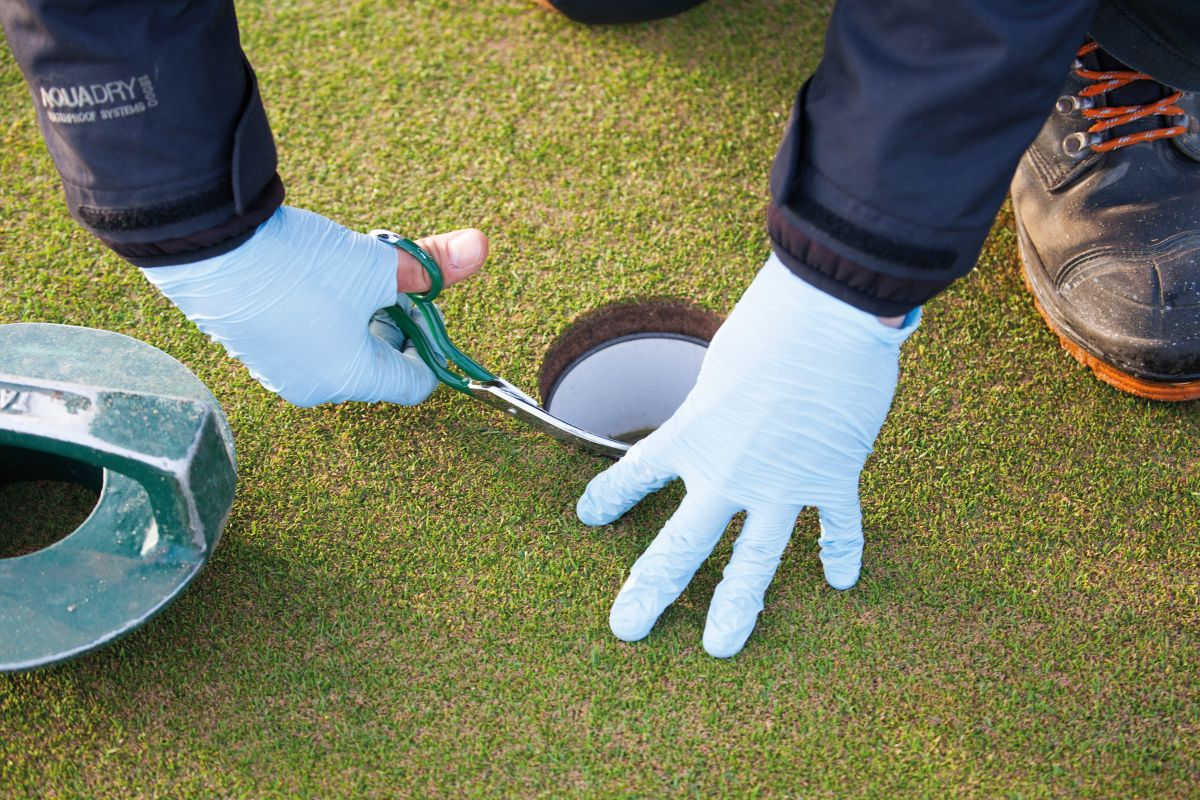
How do you set your height of cut and what does that do for your course?
Caroline: They are up at 5mm for the winter. We just cut once a week and then slowly bring them down. I never go lower than 4mm – just because I feed mine granular and I only recently got a sprayer that works. I go for grass coverage and them not being quite as quick but running true. I can’t put the hours into maintaining a green that 3mm would require. I haven’t got the budget for the inputs that would need to go into maintaining that.
Andrew: The lowest I would go to in any given year is 3.75mm and that’s during the summer months. Through the winter, we come up to 4.5mm and that’s to give the plant a little bit of extra protection through those colder months when there is less growth. Some guys might bring the height of cut up to maybe 6mm during the winter but I like to keep a little more consistency. We don’t go excessively low in the summer and we don’t go excessively high through the winter.
Rob: It varies depending on the time of year and grass species. We’d be around 4.5mm in the summer and 5-5.5mm in the winter. That gives us a good balance, with the amount of fine grass we’ve got, to achieve a sensible speed for daily play. If we needed to lean on it with some rolling, we could still manage to get a reasonable speed for an external tournament.
How much does it cost to maintain your greens and keep them to the standard you want? How big a pressure is it on your yearly budget?
Rob: It’s a reasonable amount, but the whole premise of what we’ve tried to do around fine grasses is to make it as sustainable as possible. There are certain things – from a links point of view – where if you can spend money on quality products then you should. Grass seed, wetting agents, certain high quality organic based fertilisers, or products that work well and have the longevity you need. Links managers would probably put our faith in quality wetting agents and grass seed, more than anything, and a good wetting agent programme nowadays costs a lot of money.
Caroline: My budget for the year is £3,000 and pretty much half goes on the greens. My general running costs – fuel, fertilisers, hand tools, maintenance of the machines – we try to keep within that. I have got a great relationship with other courses. Tain are using a different feeding system this year so I got all their old stock for £500 and that will pretty much do me for the next three years. Skibo have given me their hole cups and pins. I’m getting 18 and I’m only using nine. I’ll get another two seasons, maybe three, out of that so it’s another six years’ worth of stuff. St Andrews were getting rid of their tee markers. They’re very good to me. Fantastic.
Andrew: That is a really difficult question to answer because there are so many variables – whether we’re taking into account labour or the actual physical cost of materials and machinery. We invest heavily in our greens. Our club is relatively young. We’re 30 years old this year and I’ve been course manager for 21 of those. In the early days I made the decision, ‘what keeps golfers coming back?’ While the rest of the course was fairly immature, I thought, ‘if the greens are good, people will come back and forgive an awful lot of other sins’. That’s something I’ve maintained throughout all these years – to invest significantly in greens and their maintenance and upkeep, both in time and materials and whether that be sand, fertilisers, bio-stimulants and all the other things we can use. You play 50% of your round on a green and putting is when you notice it the most.
What do golfers need to understand about green speeds?
Andrew: I focus less on green speed and more on smoothness and consistency so that any one green is similar in pace to any other on the golf course. We don’t regularly monitor green speed. We don’t take regular readings. We never, ever, publish them. I don’t think it is something I’d like to get into because, to the average golfer, it doesn’t mean anything. A Stimpmeter reading of 10 probably doesn’t mean anything and, to those that it does, they can wear it as a badge of honour. I don’t want to go down that route. It does vary throughout the year for us. When we have big events on, or club championships, we might change our practices a little bit more to increase the green speed. That could be a bit of extra rolling or a slightly lower height of cut for a day or two. But green speed is not something I really focus on.
Rob: I absolutely agree with that. It’s a risky business if you’re one of those places that are going to publicise green speeds on a daily basis. That would be pretty challenging. I think the green fees alone in this part of the world are pressure enough on course managers and their teams. Smoothness and trueness. How is the ball rolling? That’s what it is all about. Putting a number on it probably only really has its place if you’re producing surfaces for tournament play or tour play.
Caroline: If you have the staff to cut and roll, that’s fair enough, but golfers moan when you do aeration – it’s like you’re deliberately ruining their enjoyment of the greens. They will go, ‘your greens are amazing, why have you done that?’ Well, it’s because of the cutting and the rolling and the compaction. You have to alleviate that. They don’t understand the process of relieving compaction has to be done. I think there are some unrealistic goals. They see places like Augusta and Pebble Beach, and all these other places, and it’s all about being green and they don’t realise the input that’s going into these things is just unattainable for most places.
I don’t do any of that [taking data, looking at moisture levels]. They are what they are. There’s nothing more I can do. I’ll scarify them and stuff like that to try to help before a big competition –to speed them up a bit – or a double cut. But knowing how fast they are is not going to make any difference to how I treat them because I can only do what I can do. We’ve got greens that are exposed. We’ve got greens that are shaded. I think it would be pretty much impossible to get all my greens stimping at the same anyway. I try and get them as close as I can.
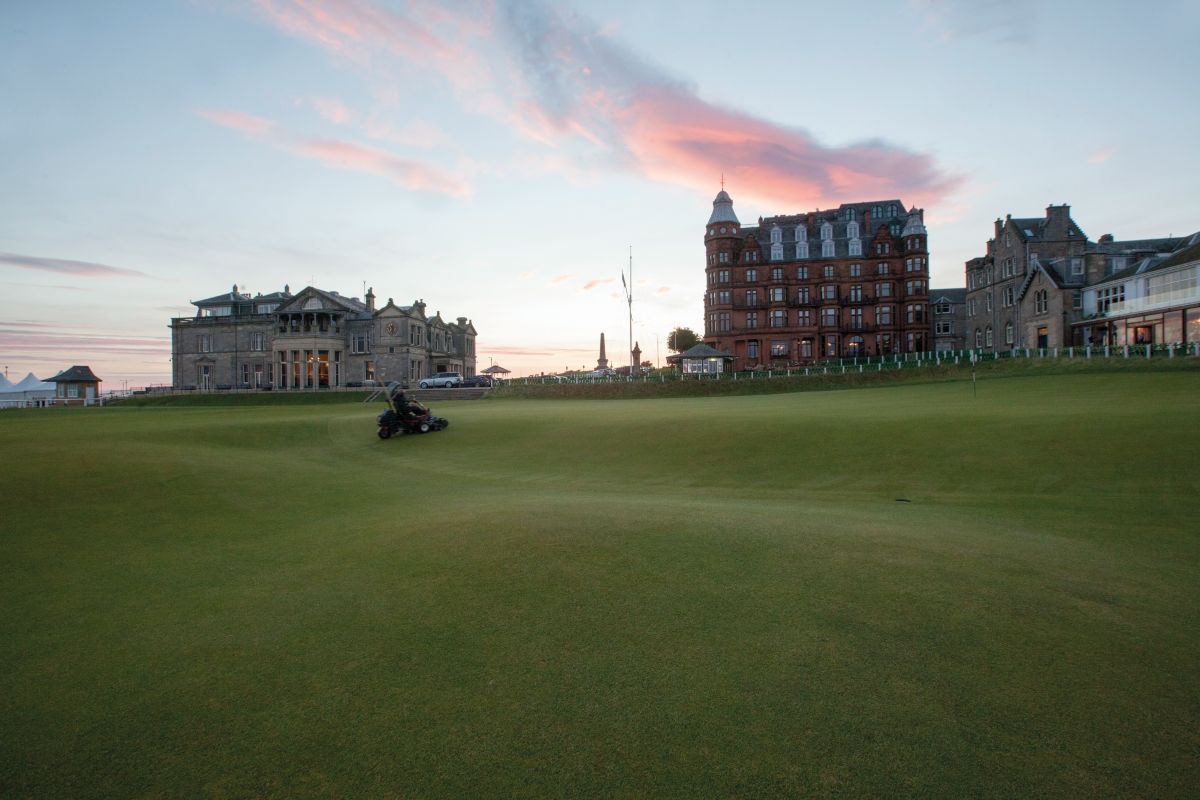
We hear a lot about climate change and the tools – in terms of fungicides – that have been taken away from greenkeepers to treat disease. How difficult is that pressure and how tough will it be going forwards?
Caroline: It was difficult when I first started because they used to topdress once. But with free sand and the work we’ve done, the greens aren’t as wet now. I now have to topdress surrounds because there is such a massive difference in the firmness of them. I don’t have the footfall a lot of courses have, so there is not as much pressure on my sward. I feed and I try and keep the grass as healthy as possible and I analyse the soil.
I have – once in the 15 years I’ve been here – sprayed a fungicide, but that’s it. I cut five days a week, so they get a break the other two days, and I don’t have thousands of people playing my course. In a way, that makes it easier for me on the disease side because I’m not having to stress my plant out as much.
Rob: For a lot of clubs, it will be extremely difficult. If you’ve not managed to communicate that, or get some strategies and policies in place that are starting to mitigate them, you’re going to be in a lot of trouble. That’s down to governance, because I dare say there aren’t many course managers out there that are ignoring it or not pushing for it to be considered around everything that’s being done. We’re seeing [microdochium patch, anthracnose, dollar spot] all of the above – and that’s largely climatic. We’re getting milder, more favourable conditions for those diseases on a year-round basis. There are a lot of cultural boxes you need to tick to try and mitigate the effects. But if the climate is changing the way it is, and these rainfall events are putting the pressure on drainage networks, and these dry spells put the pressure on irrigation, it has really brought into sharp focus how people need to be thinking about these things.
Andrew: I’m quite fortunate that we’ve had greens performing well for many years. The only time I really need to worry about disease is in the autumn. You could almost diarise it. It’s the second or third week of October when we start to see the onset of some fusarium so, depending on the weather, that’s when I would time my preventative application of fungicides. Generally, I would only use one application a year – occasionally two if it’s particularly high pressure.
One of the biggest challenges for us is the lack of chemicals available compared to what we’ve been used to in years gone by and I think lots of clubs are having to change their processes to accommodate that. There is also the expectation of members, particularly when it comes to the presence of disease on greens, worm casts, pest damage, chafer grubs and leather jackets. And, for all those things, we’ve got very limited opportunity to control now with chemicals. There is nothing you can apply to help with casting worms and that’s having a huge impact. We’re noticing that on all areas of the golf course and not just on greens.
Preparing Greens: How the R&A advise at their championships
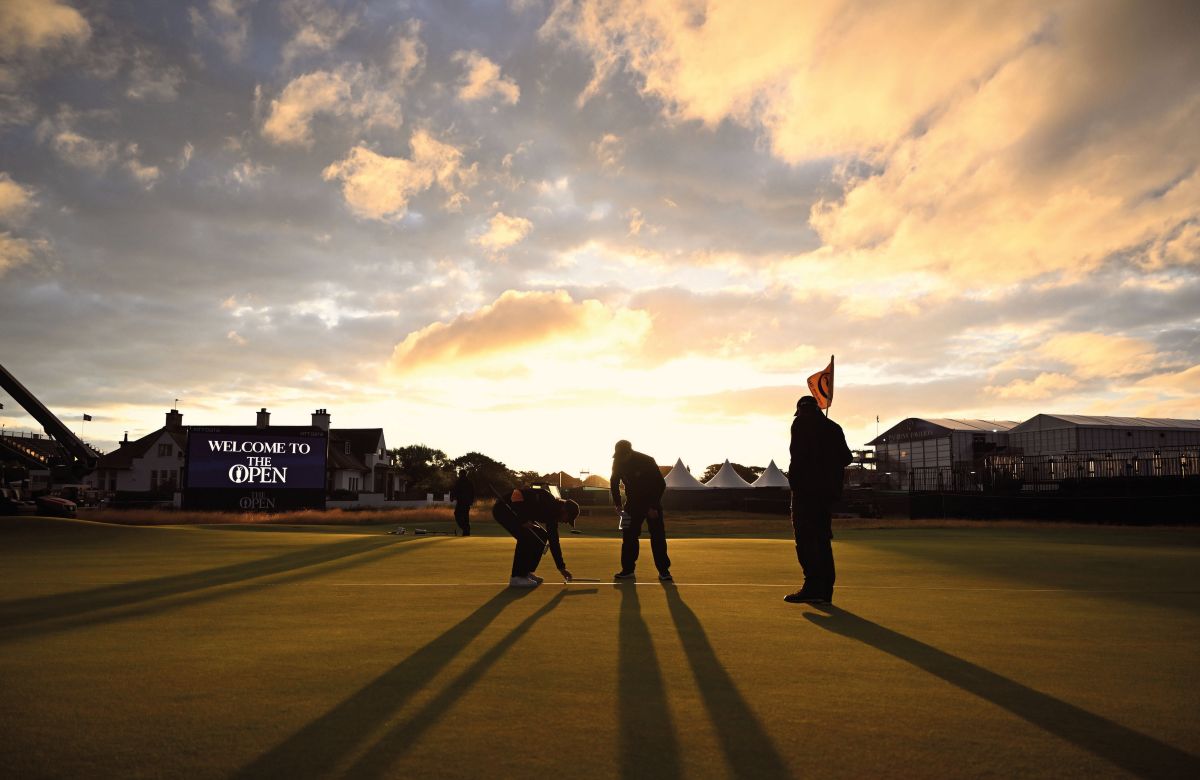

Adam Newton, championship agronomy manager at The R&A, explains how the governing body work with host venues to ensure top-class greens conditions.
Eavesdrop a post-round clubhouse conversation and it’s likely you’ll hear golfers talking about the greens. For good or otherwise, the way we perceive how the putting surfaces perform during a round often defines our experience.
Helping golf clubs to prepare and maintain greens is a crucial part of Adam Newton’s role as championship agronomy manager at The R&A.
“It’s where championships are won and lost,” he says. "It’s a job that sees him work with host venue greenkeeping teams at R&A Championship Venues, including The Open, AIG Women’s Open and Amateur Championships, as well as clubs like yours."
This year, The R&A will stage championships at courses from Conwy and Gog Magog to Leopard Creek in South Africa and Tanah Merah Country Club in Singapore. But wherever an event is being staged, regardless of size or infrastructure, the principles of excellence remain. We asked him for some key pointers to help us understand how greens are prepared at the highest level.
We work with clubs for years before an event
We start preparing for the next Open as soon as the last putt drops at the current venue. We’ve got a constantly evolving agronomic plan. With other venues, which might have been announced as hosts two to three years out from the championship, we’ll start working with them from that point. That might be a historic venue, so we’ll have a good head start, or it might be a new one.
We’ll do an initial visit, identify key objectives and collaborate closely with the greenkeeping team on formulating an agronomic plan to take forward. It is a truly collaborative effort, and the plans put in place extend focus beyond the championship and to a sustainable future at the venue. As we get closer to the championship, we will focus on adding the final polish to the golf course and really dialling in playing performance. This will involve ensuring the feeding strategy is right, refining the texture of the surfaces and achieving optimal consistency from green to green.
We make the greens the priority
A great deal of consideration will go into how the greens are set up by our course set up team, and their objectives will differ greatly depending on the genre of golf being played (whether that’s men’s or women’s, juniors or seniors) and the style and design of the course. The weather conditions at the time of the championship will also play a huge role.
In terms of green speed targets, this will depend on many factors, such as the slope, size and difficulty of the greens and also exposure to the elements (especially wind). We generally keep green speeds sensible at 10-11ft and really focus on the consistency between greens. If the wind blows, we will bring speeds down. One factor to consider is that excessive green speeds will mean that we lose all the interesting hole locations on greens and there will also be a considerable impact on the pace of play.
The firmness of greens presents perhaps the greatest challenge to players and our targets will differ between different genres of golfer due to differences in hitting distances, spin rates, trajectories and also the design of green complexes.
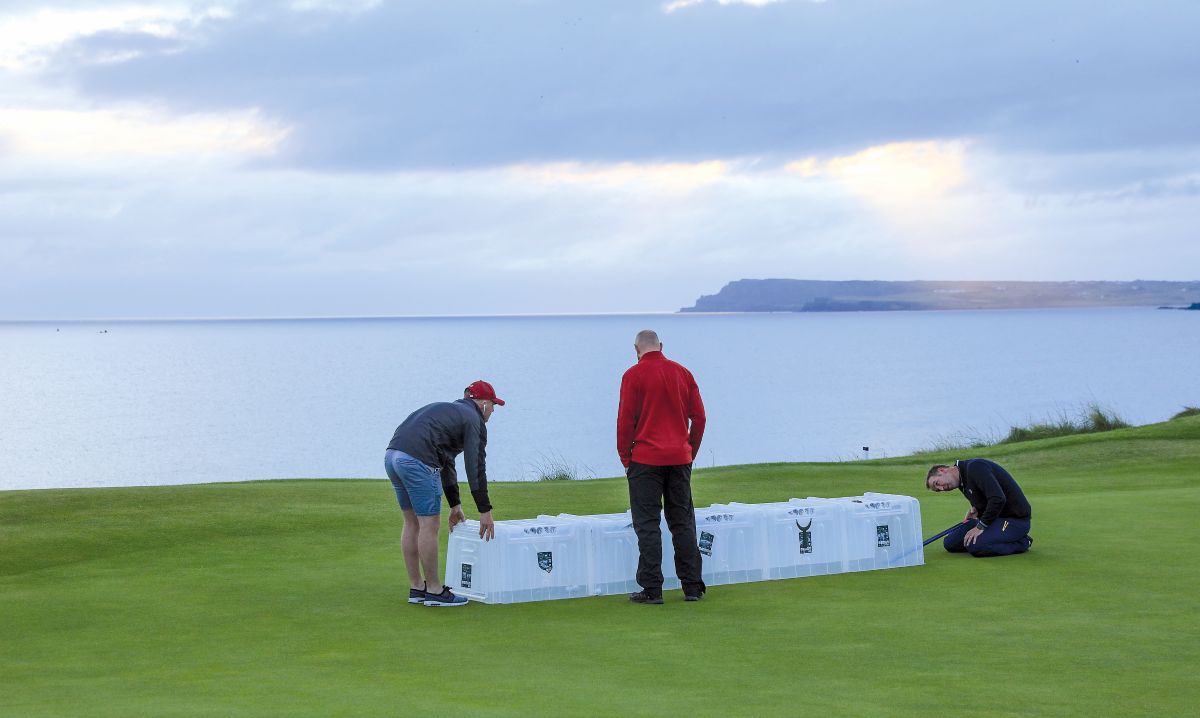
We study speed and firmness closely
Firmness is a measure of the interaction between the ball and turf upon impact with the surface. A firm green will place a real emphasis on accurate ball striking. A softer surface will be more receptive and less challenging, with the ball stopping quickly upon impact.
Green speed is how the ball travels across the surface when putting and chipping. The speed of the surface and the firmness, though they’re interlinked, are quite different.
Sometimes the hardest challenge is correlating the two. Getting firmness into the surface is about the core agronomy of the greens. It’s how the soils underneath are performing and how much moisture is being held. If organic matter is well managed, you have good drainage properties beneath the green and fine, deep rooted grass species dominating the surface, then you are in a position to dry the greens down heading into a championship. As you dry the greens down, they get firmer.
If the correct agronomy isn’t in place, there will be a limit on how far you can dry the greens down.
With green speeds, it’s all about managing the grass plant at the surface. Getting the texture of the turf right will be a key element and we can influence this by different mowing strategies. Rolling can also be a useful way of adding polish to the surfaces, although we mostly focus on mowing at the championships as that will give us the most consistent performance.
We are watchful for diseases
The challenges we have at championships are the same that everybody is having. Climate change coupled with the impact of pesticide legislation is presenting increasing challenges.
An example of the impact of climate change in the UK is the disease Dollar Spot. This was rarely seen a few years ago and was mostly confined to warmer climates but we are now seeing it frequently on our shores. It’s very aggressive and targets some of the best grass species and can be difficult to control.
Fairy rings are also a challenge. As we dry the greens down to achieve firm playing conditions at the championships, we can often trigger fairy ring activity. Fairy rings are a natural sight on most links courses but it is important that we ensure that symptoms are only cosmetic and not impacting playing surfaces.
Turfgrass pests are also incredibly challenging and warmer winters are seeing greater survival rates of grubs like leatherjackets and chafers. Changes to pesticide legislation also mean that it is much more challenging to control these pests.
We have all these challenges at championships and we handle them the same way you would at any venue. Whether it is turfgrass diseases or pests, we need a holistic and sustainable approach to their management, incorporating a blend of cultural, biological and chemical control strategies. Research and education are also really important parts of us getting better and better at managing these challenges – both of which we are committed to at The R&A.
What to read next
How automation is transforming greenkeeping – without replacing greenkeepers
Tags
Author



